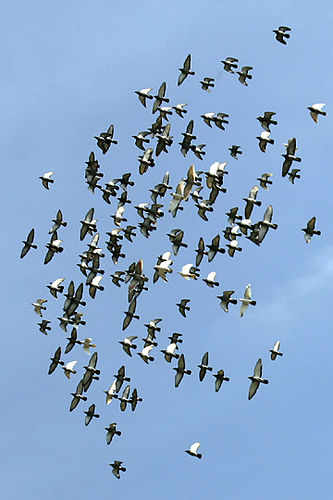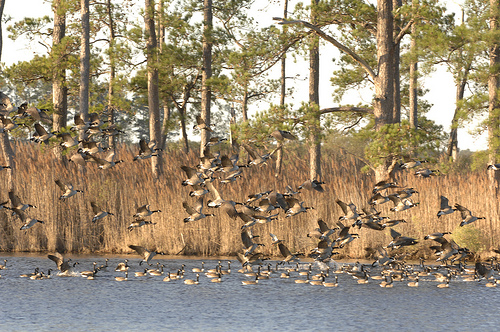By Katrina Marland
What is one of the almost universal things that say nature to us humans? It can wake us up in the morning, relax us on a walk, be a taste of the country in the middle of a city and is even used in movies and television simply to say “it’s a nice day out.” That’s right — birdsong. At American Forests, we’re pretty big fans of birds, whether we’re planting trees to protect the Kirtland’s warbler or other birds, telling you where to go to see your feathered friends or reporting on how birds are faring in today’s changing environment. And the explanation is pretty simple: Birds and trees just go together.
Tomorrow is International Migratory Bird Day, or IMBD (not to be confused with the popular movie site IMDB, where The Birds you’ll find are less than friendly). Always the second Saturday in May, IMBD is a day to celebrate and bring awareness to the many birds that cross our paths, both here and abroad.
Bird migration is one of the most amazing and important natural phenomena that we humans get to witness every year. It can tell us a great deal about a species of bird and also speaks volumes about the state of ecosystems, including levels of prey or whether there have been recent disturbances.
Some birds’ migrations only cover short distances, while others travel much further. The arctic tern, for instance, travels an average of 44,000 miles on a wandering route from its arctic breeding ground to its home in the Antarctic. Some species fly low, while others fly thousands of feet above the ground. Bar-headed geese have been known to reach altitudes of 29,000 feet as they migrate across the Himalayas. That birds can find their way on such long trips continues to amaze both the average observer and the educated scientist. They use the sun, the stars and even the Earth’s magnetic field to navigate their way across continents.
Birds prepare for these often rigorous trips by entering a state called hyperphagia, where they eat almost continuously in the days or weeks leading up to the migration, storing the energy from the food as fat to be used on their journey. Some birds store so much energy that they can double their own body weight!
All of this, work, however, is only worth it if the place the birds are going — whether it is a breeding ground, a warm vacation home to wait out the winter or the promise of an all-you-can-eat buffet — is still a healthy ecosystem when the birds arrive. As habitats continue to fall to development, climate change, wildfires and dozens of other factors, more and more migratory birds face a stark reality instead of a warm welcome when they reach their destination.
So how can you get involved in this year’s International Migratory Bird Day? You can go to any of the dozens of bird-centric events that will be taking place across the country to raise awareness of bird conservation, including several at national wildlife refuges. You can also contribute to organizations that work to protect and restore habitats for birds, including American Forests. However you decide to participate, take some time to celebrate our feathered friends this weekend, and don’t forget to check out Environment for the America’s list of 20 Ways to Conserve Birds, from cutting down on plastic to helping to educating others about the issues facing bird conservation.

